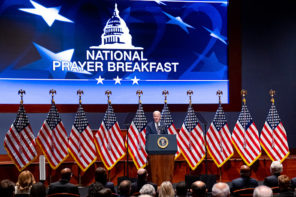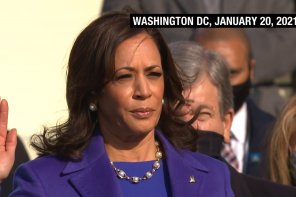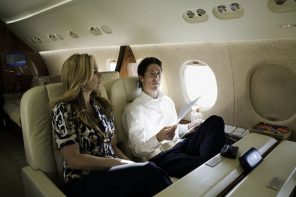When I moved to New York City just over a year ago, I started going to church. More precisely, I started going to the churches—dozens of them—that were located in New York City’s public schools.
I attended services all over Manhattan, in Brooklyn, Queens, and the Bronx. I watched as congregants prayed over pictures of children from diverse families that lined the school’s hallways. In public school classrooms, I learned about creationism and was taught that all children who do not believe in Jesus will go to hell, along with their parents. At a public school in Greenwich Village, I heard a congregant describe the anti-gay ministry that is affiliated with the church planted at that school. From my seat in a public school library, I was instructed to pray for the glorious day that America’s system of government, finance, media, and education would be overtaken by Christian control.
I even went to services at my own children’s public school, and observed a youth ministry operating in what would soon become my son’s kindergarten classroom. The churches I attended enjoyed, after school hours and on weekends, ample space and furniture, newly painted walls, renovated bathrooms, and prime neighborhood real estate. And not one of them paid rent.
I attended these churches while researching my forthcoming book on religion in public schools. Church-planting in public schools is just one of the dozens of religiously-driven initiatives made possible largely through judicial activism on the right: a combination of a surge in self-identified Christian law firms, along with a Supreme Court increasingly hostile to church-state separation.
I investigated a range of other activities—afterschool religious clubs, organized peer-to-peer proselytizing, the textbook wars—but I was particularly interested in church-planting because it was the subject of a case against the New York City public school system that would eventually make its way to the Supreme Court of the United States.
Bronx Cheer
It all started in 1994, when a church group called Bronx Household of Faith, unable to raise the hundreds of thousands of dollars it needed to build a facility, sought to make use of Public School 15 in the Bronx. The New York City Department of Education excluded the church, citing its policy of excluding both religious services of worship and meetings of partisan political groups at public schools. The courts consistently upheld the DOE’s policy—until 2001.
The Supreme Court’s 2001 ruling in Good News Club v. Milford Central School changed everything, opening up new possibilities for the Bronx Household of Faith to challenge the City’s policy, and the court proceedings began anew.
The Good News Club decision created a new legal theory for opponents of church-state separation. The Court held that religion is nothing but speech from a certain point of view, and therefore all religious activities are protected by the Free Speech clause of the First Amendment. “When Milford denied the Good News Club access… on the grounds that the club was religious in nature,” Clarence Thomas concluded in his majority opinion, “it discriminated against the Club because of its religious viewpoint.”
Rather than examining whether the activity violated the Establishment Clause, which prevents the endorsement or appearance of endorsement of a particular religion by the government, the case opened the door for church planters to claim they were being discriminated against by being denied the use of public space.
A Rush to Plant Churches
Immediately following the Good News Club decision, the district court ordered the New York DOE to open the doors of PS 15 to the Bronx Household of Faith. National and international evangelical church-planting organizations seized the moment to establish taxpayer-subsidized houses of worship throughout New York City. Every Nation, Go-2 Church Planting Ministries, Redeemer Presbyterian Church, Sojourn Community Church, the Church Planting Network, and Mosaic are among the large-scale organizations that successfully planted churches in multiple numbers of New York City’s public schools, and the numbers grew quickly.
During the 2010-2011 school year, the Department of Education said 160 congregations were granted permits for worship services. The new churches valued not just the free real estate, but also the proximity to children and families, and the credibility provided by their new physical setting. Owing to the fact that schools are generally available to the community only on Sundays, not Fridays or Saturdays, the opportunity was not open in any significant way to Muslim or Jewish congregations.
“We have been enjoying meeting in the school these past two months. It is certainly a much easier venue for newcomers… Afterwards, it is a nice new auditorium, a new school that was built in 1995,” wrote Pastor John Hall of the Bronx Household of Faith in a 2002 newsletter. In the next paragraph, he continued, “Most important, however, is what we have been saying all along. This is a much larger issue than just this church—it has to do with church planting and evangelism in New York State.”
To the consternation of New York City’s Board of Education, many of these new churches raised controversies in the communities where they were located. They irked parents and administrators by distributing free hot chocolate and candy to school children, and provoked concerns that New York City’s public school system had been coopted into a taxpayer-financed source of real estate for houses of worship—almost all of them evangelical Christian.
The Board of Education continued to fight to reinstate its old policy of excluding such religious groups, and in 2011 it at last scored a significant victory in the Court of Appeals for the Second Circuit. In his decision, though, Second Circuit Judge Pierre N. Leval essentially rejected the theory of religion enshrined in the 2001 Good News Club decision, and he did so on excellent logical as well as constitutional grounds.
Services of worship, Leval said, are a kind of activity that is distinct from the expression of any particular point of view; consequently, to prohibit the activity of worship “does not discriminate against any point of view.”
He correctly pointed out that the school excludes partisan political groups, but doesn’t thereby discriminate against their political viewpoint. In fact, human beings throughout history have understood that religion is distinct from speech, even if it involves speech. The framers of the Constitution understood this too, which is why they included two clauses in the First Amendment governing religion as distinct from speech.
“The board could… reasonably worry that the regular, longterm conversion of schools into state-subsidized churches on Sundays would violate the Establishment Clause by reason of public perception of endorsement,” he concluded.
“A worship service is an act of organized religion that consecrates the place in which it is performed, making it a church… Bronx Household and the other churches that have been allowed access under the injunction tend to dominate the schools on the day they use them.”
A Small Victory
The Bronx Household of Faith, backed up by the massive legal firepower of the Alliance Defense Fund, promptly appealed to the Supreme Court. But just this Monday, the US Supreme Court declined to review the appellate court’s ruling.
This decision represents a small victory for those who wish to get public schools out of the business of promoting particular religions. It might have been a bigger victory had the Court accepted the case and affirmed the lower court’s ruling—which implicitly challenges some of Court’s jurisprudence, over the past two decades, affecting the role of religion in public schools. Given the current composition of the Court, however, we should count ourselves lucky that the Court did not choose to go big.
The Alliance Defense Fund, which has the backing of almost every major organization of the religious right, put a lot of chips on its gamble to reverse the Second Circuit decision. The ADF understands well that at stake in the case is the specious theory that identifies religion as something that can be analyzed for legal purposes as just speech. Naturally they are dismayed by the decision of the Supreme Court not to take up the case, calling the decision “befuddling.”
The judicial philosophy behind the Good News Club decision has wreaked serious havoc on public schools’ ability to negotiate the delicate relationship with religion, and in more areas than just planting of churches in public schools. The Second Circuit decision has helped to reverse some of those unfortunate consequences in one region, and in one area of concern.
At my children’s public school in New York City, the religious group that has made the school its rent-free home for several years is now seeking other arrangements. They no longer meet up to four times a week at the school, and instead restrict their presence to Sunday evenings. By February 12, the deadline set by New York’s Department of Education, they will have to find another space.
But the religious movement of which they are a part still has our public schools, and children, in its sights.




